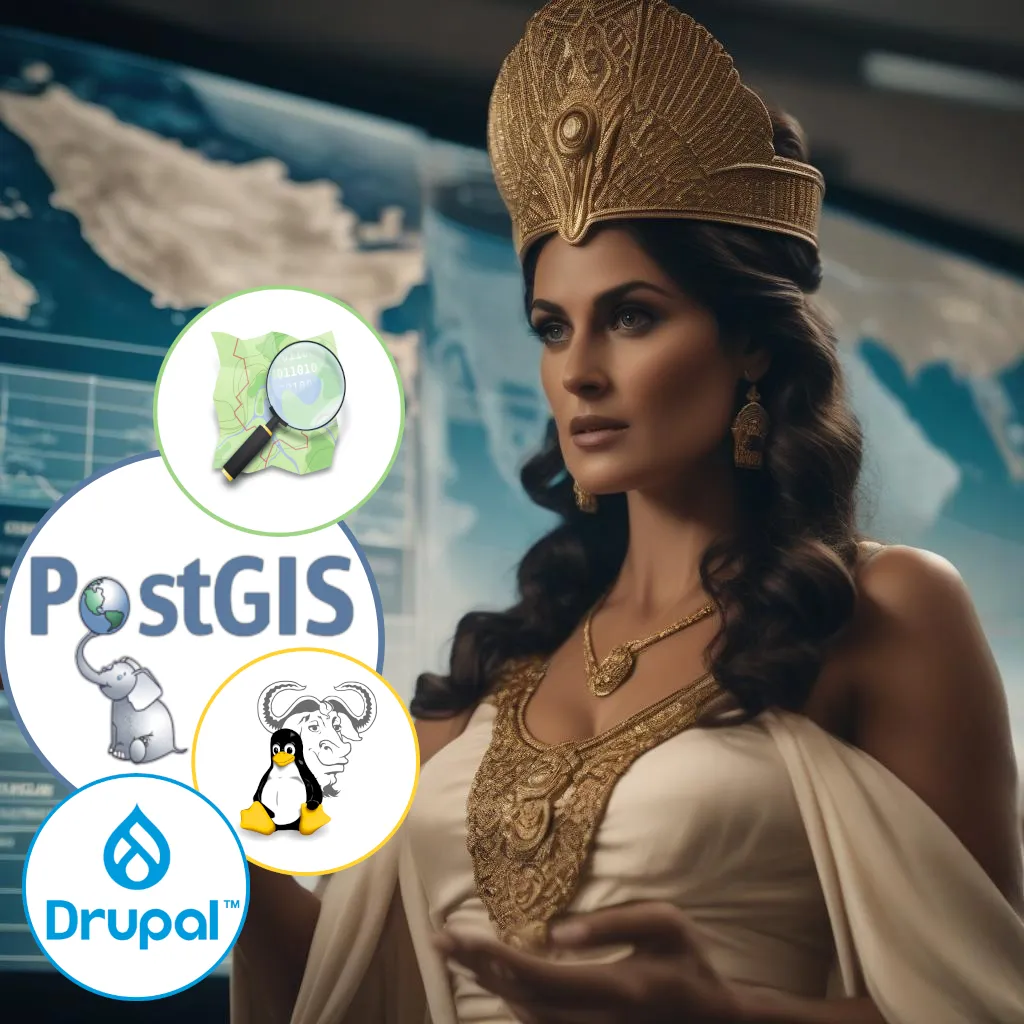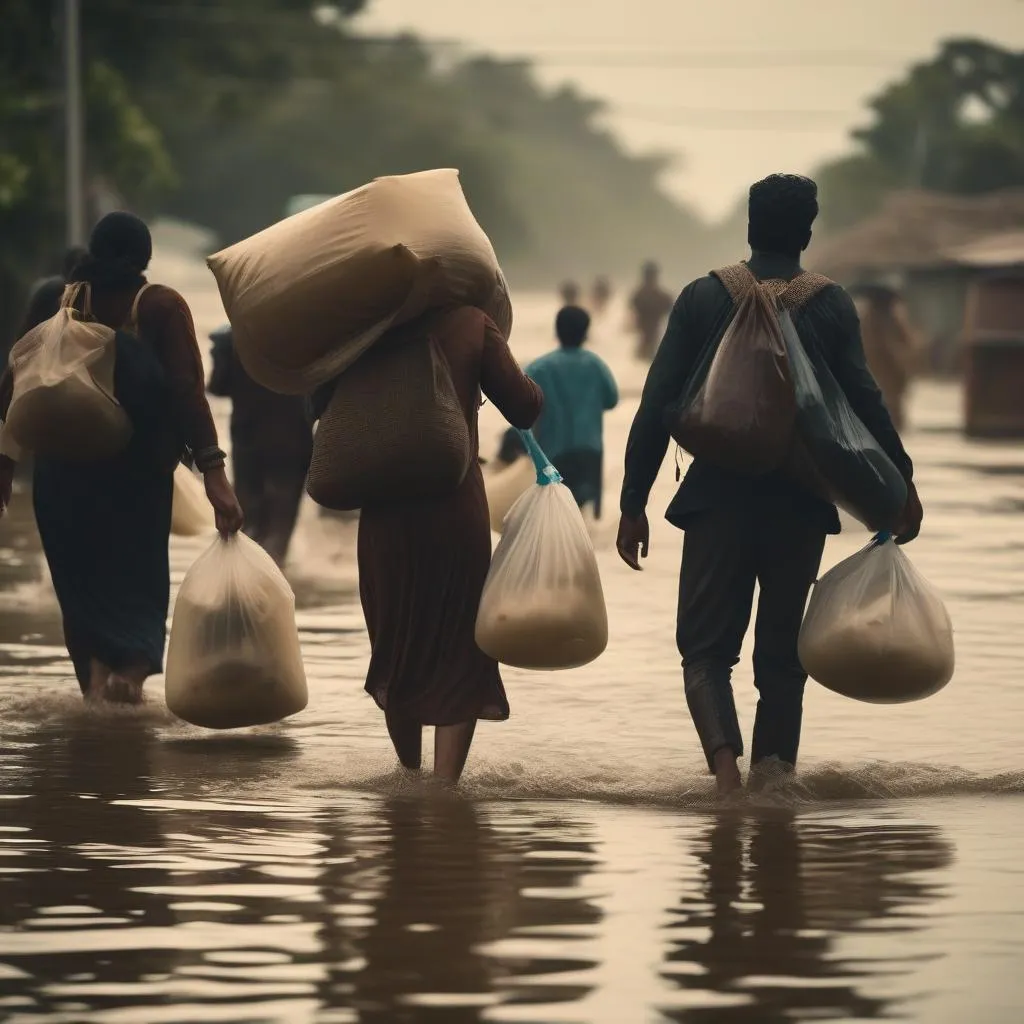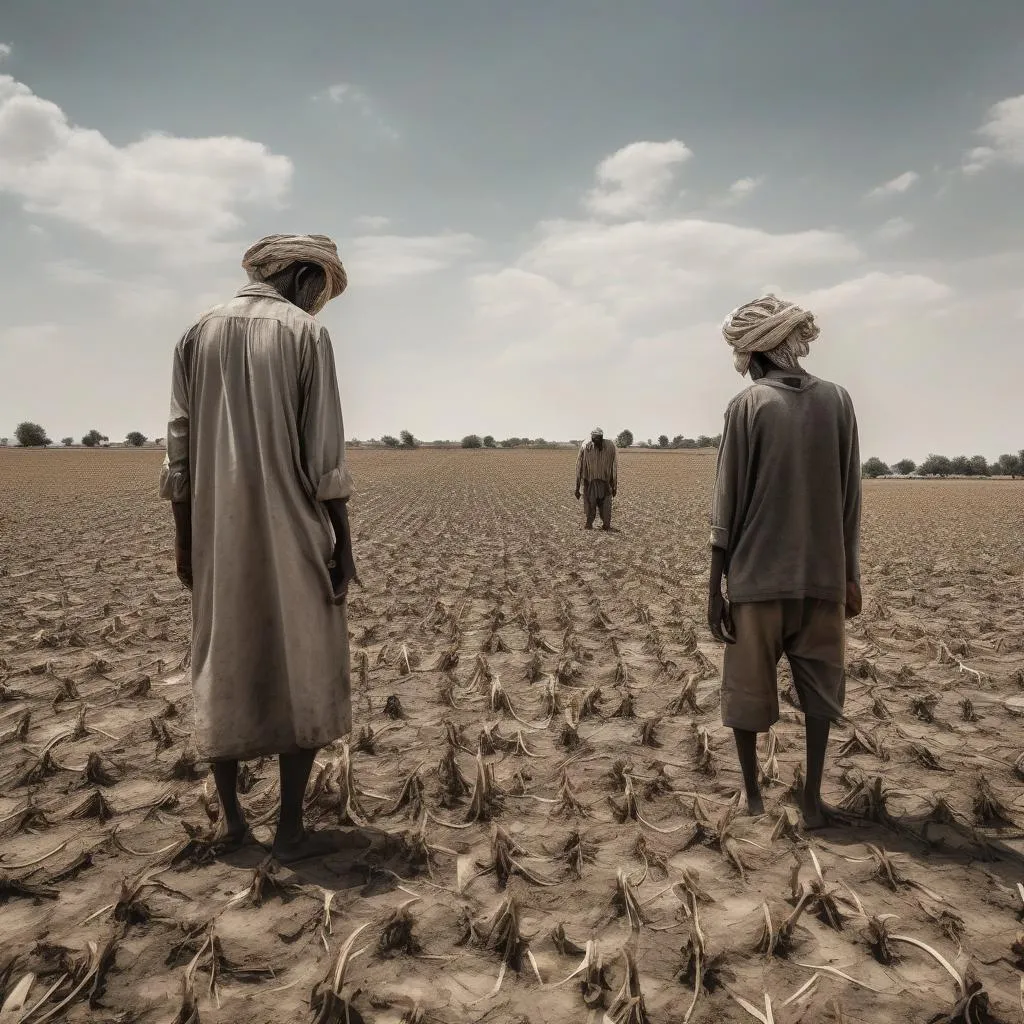
The global climate crisis is undeniably one of the greatest challenges we face today. As responsible citizens, it is essential to explore innovative ways to minimize our carbon footprint and mitigate the adverse effects of climate change. In this post, we delve into how free software can play a pivotal role in the fight against climate change.
Embracing free software within our daily lives, not only enables us to save significant resources and energy, but also fosters collaboration among nations, thereby accelerating progress towards sustainable development. By promoting digital literacy and equipping people with essential digital tools, we can create a greener, cleaner, and more interconnected world for future generations.
The widespread use of free software in sectors such as telecommunications, transportation, energy production, and manufacturing can lead to greater efficiency, reduced waste, and ultimately lower our dependence on harmful fossil fuels. Additionally, open-source coding methods allow experts from all around the globe to contribute their skills and knowledge, resulting in more efficient solutions that address climate change challenges.
Although the impact of free software on climate change may seem minor, it is vital to recognize its potential in creating a sustainable future. As more organizations adopt open-source solutions and promote digital literacy, we can unlock unprecedented levels of collaboration, innovation, and progress in tackling the global climate crisis.
Together, we must prioritize our collective effort towards adopting new technologies and embracing digital transformation as a tool to combat climate change. In doing so, not only will we preserve and protect our planet for future generations, but also enhance the quality of life for all living beings on Earth.
10 Major Risks Associated With Climate Change:
We have listed for you the 10 major risks brought by climate change. The given list of 10 major risks highlights some of the most significant consequences and challenges that climate change poses to our planet, societies, and economies. These risks include impacts on ecosystems, health, infrastructure, resource availability, social conflicts, etc., emphasizing the need for urgent action to address this global issue.
1 - Rising Sea Levels

Glaciers melting and warming temperatures are causing sea levels to increase, threatening coastal cities, low-lying areas, and infrastructure around the world.
As a consequence of rising sea levels, coastal cities, low-lying areas, and infrastructure are at risk of being submerged or damaged by floods due to higher water levels inundating these locations. This can result in environmental damage, economic loss, disruption of human activity, migration, and displacement, as well as pose challenges for policymakers on how best to mitigate the impacts of climate change and protect vulnerable communities.
2 - Extreme Weather Events

Extreme weather events are a direct consequence of climate change, causing dramatic changes in weather patterns. With rising global temperatures, heatwaves become more common and severe, leading to wildfires and droughts in some areas. Meanwhile, flood risks grow due to increased rainfall and melting glaciers, putting life, property, and ecosystems at risk worldwide.
Changing temperatures due to global warming are causing hotter and longer periods of extreme heat, posing risks to human health, agriculture, and energy resources. Changing weather patterns, dry conditions, and higher temperatures can lead to increased risk of wildfires that devastate forests, wildlife habitats, and human settlements. Altered rainfall patterns and higher temperatures caused by climate change can result in droughts, negatively affecting agricultural production, water availability, and ecosystem health in affected regions. Heavier precipitation events due to changing weather patterns might cause floods that can damage infrastructure, disrupt economic activities, and pose threats to human lives and property.
3 - Food Insecurity

Rising temperatures and altered precipitation patterns impact agriculture, leading to reduced crop yields. This leads to food insecurity in several regions, especially in countries with fewer resources or depending on imports for their food supply. The challenge is exacerbated as these nations struggle to adapt to climate change's effects.
Shifting precipitation patterns and increased temperatures can adversely affect crop growth and productivity, leading to reduced yields and supply of food. Countries with limited resources for agriculture or those that depend heavily on imported goods for their food security might struggle more in the face of climate change's effects on agricultural production. The combination of reduced agricultural output and increased demand for food due to population growth can result in food shortages in many countries, posing a significant threat to global food security.
4 - Water Shortage

As global population grows, so does the need for water, putting additional pressure on finite water resources. However, climate change decreases freshwater supply through factors like droughts and floods. Changing weather patterns and extreme events (droughts and floods) reduce the amount of available freshwater due to variations in precipitation. The competition over limited shared water resources between nations can lead to tensions, conflicts, or diplomatic disputes related to accessing and utilizing these precious resources.
5 - Ecosystem Disruption

Ecosystem disruptions arise from climate change impacts like temperature increase, sea level rises, and altered precipitation. These factors force habitat shifts for animals, causing species extinctions. Additionally, poor air quality caused by wildfires and pollution threaten human health. Changes in the environment and available resources due to climate change might force species to move or adapt, leading some of them to struggle for survival. If they fail to adapt quickly enough, these species may go extinct. The altered environment can also lead to other issues related to human health. For example, increased forest fires and pollution due to climate change might cause reduced air quality, which could potentially lead to respiratory problems and various illnesses in people exposed to this polluted air.
6 - Health Risks

A warmer world causes changes in the distribution and activity of vectors like mosquitoes that transmit diseases. This leads to more frequent cases of diseases like malaria, dengue fever, and Lyme disease, presenting major public health concerns for these areas.
Malaria: A serious tropical disease caused by parasites transmitted by mosquitoes; climate change is thought to be increasing the geographical spread of this disease due to changing precipitation patterns, higher temperatures, and shifts in mosquito ranges.
Dengue fever: A painful viral infection transmitted by mosquitoes (Aedes species); climate change could lead to an expansion of its range into new areas with suitable conditions for the vector's survival and reproduction.
Lyme disease: A tick-borne illness caused by Borrelia bacteria; changing temperatures and precipitation patterns could alter the distribution and abundance of ticks, thereby increasing risk in regions previously unaffected by this disease.
These vector-borne diseases pose significant public health challenges in affected regions as they can lead to severe morbidity and mortality, along with substantial healthcare costs and economic burdens on those communities.
7 - Economic Impacts

The costly consequences of climate change may result in damage to infrastructure, disruption of supply chains, loss of biodiversity, and migration crises, impacting national economies worldwide. Changing weather patterns and extreme events due to climate change can damage or destroy vital public and private facilities (e.g., buildings, bridges, roads, etc.) leading to costly repairs, delays in their functions, and disruptions to daily life. Changes in temperature, precipitation, and extreme weather events can disrupt the smooth flow of goods and services. It can affect agriculture, manufacturing, trade, energy production, and other sectors leading to higher transportation costs, increased prices, or shortages in products. Climate change is causing loss of ecosystems and species leading to reduced food security, reduced sources of medicine, and economic losses from the decline of tourism and recreational activities that depend on biodiverse environments.
Environmental disasters (e.g., floods, droughts, heatwaves) caused by climate change can force people to abandon their homes, leading to large-scale displacements of populations from regions where these events occur to other areas with less extreme conditions. This results in social and economic challenges for affected countries and the nations receiving migrants.
8 - Loss of Biodiversity

Warming temperatures and altered habitats are causing some species to move away from their original environments, leading to shifts in global biodiversity patterns. Some plant and animal species might become extinct due to climate change-induced environmental changes or other threats (e.g., habitat destruction). Species that have managed to migrate may face challenges as they adapt to their new environments, potentially resulting in reduced population sizes or difficulties reproducing and thriving in these unfamiliar locations.
9 - Water Related Diseases

Rising water temperatures play a role in the spread of illnesses caused by contact with or consumption of contaminated water. Warmer waters can promote the growth of these microscopic plants that produce toxic substances that may contaminate drinking water sources and cause illness in humans or animals. The presence of harmful algae, bacteria, or other pollutants in water sources can lead to water-borne diseases when people consume the affected water, causing various health problems.
10 - Social Conflict

Climate change can contribute to increased social unrest. As communities face the challenges posed by climate change (e.g., food shortages, water scarcity), conflicts over the dwindling availability and distribution of these resources may intensify, further exacerbating social tension. Climate-related disasters or reduced availability of essential resources can force people into competition with others for survival, potentially leading to violent disputes over accessing and utilizing those scarce resources.
10 Possible Software Projects To Fight With Climate Change:
We have also illustrated the free software tools that can be used to fight those risks above. These tools, can be developed easily by the free software communities around the world, empower individuals and organizations in addressing various aspects of climate change. All the tools can go live with the power of GNU/Linux, PostGIS, Drupal and OpenStreetMap.
1 - Climate Data Visualization

Climate Data Visualization is an ambitious project that aims to create a comprehensive open-source web application focused on visualizing the impact of climate change. Key features include:
1. Real-time data integration: The application will gather and process real-time data from reliable sources such as NASA, NOAA (National Oceanic and Atmospheric Administration), and other authoritative bodies to ensure accurate information about climate changes is displayed on the platform.
2. Visualization of global temperature, sea levels, and weather patterns: The application will visualize various aspects of climate change using sophisticated graphical representations like charts, graphs, and maps to make this data easily understandable for users from diverse backgrounds.
3. Content management through Drupal: To manage content efficiently, the project will utilize Drupal, a powerful open-source content management system (CMS), enabling developers to add, edit, or delete information on the application without much hassle.
4. Geospatial data storage using PostGIS: The platform will use PostGIS, an open-source spatial database extension for storing and retrieving geospatial data, allowing users to explore different regions across the globe with their associated climate change impacts.
5. Interactive maps powered by OpenStreetMap: To provide a visually engaging experience, the application will utilize the open-source mapping platform OpenStreetMap, which offers detailed, high-quality cartography of the world. This will enable users to explore and analyze climate data based on their location of interest.
This project is important for raising public awareness about climate change's severity and encouraging collaboration in developing sustainable solutions to combat this global challenge.
2 - Environmental Impact Calculators

Environmental Impact Calculators project is aimed at creating a user-friendly web application that helps individuals assess their personal carbon footprint and provides guidance on lowering its impact. The platform will include the following key features:
1. Personal Carbon Footprint Calculation: The platform will feature an intuitive tool for users to estimate their individual environmental impact through daily activities, transportation, food consumption, energy usage, etc. This data gathering will help them better understand the role they play in climate change and raise awareness about eco-friendly practices.
2. Sustainability Practices: Incorporate suggestions on how individuals can reduce their carbon footprint by adopting more sustainable lifestyles, such as using public transportation, reducing food waste, switching to renewable energy sources, or implementing efficient energy management systems in homes and workplaces.
3. Online Community and Forum: The platform will integrate a thriving online community and forum where users can connect with like-minded individuals, share knowledge, discuss sustainability practices, and collaborate on joint initiatives to address environmental challenges collectively. This social aspect is vital for fostering a sense of responsibility and collaboration among the community members.
4. Sharing Ideas: Encourage users to share ideas and success stories about sustainable living, reducing their carbon footprint, and implementing eco-friendly practices in their daily lives. The platform will also enable them to showcase these successes and inspire others to adopt similar strategies.
This project aims to facilitate a positive shift towards a more sustainable lifestyle and build a supportive community dedicated to addressing the environmental crisis through individual and collective efforts.
3 - Open Source Sustainable Agriculture Platform

The Open Source Sustainable Agriculture Platform project focuses on developing a comprehensive platform that promotes sustainable farming practices worldwide. Key features include:
1. Knowledge Sharing: Enable users to access, share, and discuss various aspects of sustainable agriculture, including soil management, water conservation, crop rotation, pest control, etc.
2. Experiences and Best Practices: Encourage farmers to share their personal experiences with different farming methods and practices, helping others learn from these real-life examples.
3. Permaculture, Regenerative Agriculture, and Organic Farming Focus: The platform will place a strong emphasis on promoting sustainable agricultural techniques that are proven to have positive environmental impacts, such as permaculture (ecologically-minded agricultural practices), regenerative agriculture (farming methods that improve the health of soils), and organic farming (growing crops without using synthetic pesticides or chemical fertilizers).
4. Collaboration among Farmers and Organizations: Foster a strong sense of community through networking, collaboration, and knowledge sharing between farmers, agricultural organizations, and environmental experts worldwide. This will enable global cooperation in addressing the various challenges faced by local food systems, promoting sustainable practices on a broader scale.
5. Free & Open-source and Accessible Content Management System (CMS): Use GNU/Linux, Drupal, OpenStreetMap & PostGIS to create a user-friendly platform that is easily accessible to everyone interested in sustainable agriculture. The platform will be designed for maximum accessibility across different devices and internet speeds, ensuring inclusivity for all users.
4 - Environmental Monitoring and Reporting System

The Environmental Monitoring and Reporting System project is focused on developing a platform that encourages citizens to play an active role in safeguarding the environment by reporting environmental crimes. Key features include:
1. User-friendly interface: Design the application with ease-of-use in mind, ensuring that anyone can access it without needing specialized skills or knowledge.
2. Multilingual support: Cater to a global audience by providing translations for the platform into multiple languages to reach people of diverse backgrounds and cultures.
3. Reporting options: Allow citizens to report different types of environmental crimes, such as pollution, deforestation, illegal fishing, etc., enabling them to share information about specific cases in their regions.
4. Real-time alerts and maps: Provide real-time alerts and interactive maps for responding agencies (e.g., environmental protection organizations, law enforcement) to quickly address reported incidents.
5. Community engagement: Encourage users to join a larger community of environmental stewards by sharing their experiences and success stories in combating environmental crimes.
6. Collaboration among different stakeholders: Facilitate collaboration between citizens, responding agencies, and NGOs in addressing the challenges posed by environmental crimes while strengthening the sense of responsibility and community involvement towards protecting our environment.
5 - Disaster Preparedness Platform

The Disaster Preparedness Platform project aims to create a comprehensive online resource center to help individuals, families, and communities prepare for, respond to, and recover from natural disasters. Key features include:
1. Information on disaster preparedness: Provide essential information about various disaster scenarios, including how to create emergency kits, establish communication plans, and ensure safety during specific types of disasters (e.g., hurricanes, floods).
2. Survival tips: Include practical advice for surviving a natural disaster, such as finding shelter, securing essential resources like water and food, and ensuring personal safety when faced with hazardous conditions.
3. Resources for victims during disasters: Offer guidance to those affected by natural disasters on how to cope emotionally, access assistance from aid organizations, and find temporary shelter or relocation options.
4. OpenStreetMap integration: Utilize OpenStreetMap, a free, open-source geographic information system (GIS), for providing real-time updates on affected areas during disasters. This can help disaster management agencies to plan rescue operations and allocate resources efficiently.
5. Community involvement: Foster collaboration among different stakeholders by encouraging users to share their own experiences and success stories in disaster preparedness or recovery efforts, building a sense of community responsibility towards addressing the challenges posed by natural disasters.
6 - Environmental Education Portal

The Environmental Education Portal project aims to create an engaging learning platform that raises awareness about the environment, sustainable practices, and climate change through interactive educational resources. Key features include:
1. Interactive courses: Design courses on various environmental topics for children and adults, focusing on different aspects of environmental science, sustainability, and climate change.
2. Games and videos: Create fun learning games and informative videos that explain complex environmental concepts in an easy-to-understand manner.
3. Quizzes: Develop quizzes to test user knowledge on various environmental topics, helping them identify areas where they need more information or expertise.
4. Drupal as a Learning Management System (LMS): Use Drupal (or Opigno LMS) for managing the platform's user accounts, content, and communication between users, ensuring a seamless and secure experience for all visitors.
5. Community engagement: Foster community involvement by encouraging users to share their experiences, knowledge, and ideas related to environmental issues, creating a collaborative learning environment for everyone.
7 - Crowdfunding Platform for Sustainable Projects

The Crowdfunding Platform for Sustainable Projects project aims to build a powerful online platform that empowers individuals and organizations to fund sustainable projects addressing climate change issues or promoting eco-friendly practices. Key features include:
1. Climate change-focused campaigns: Provide funding opportunities specifically for projects combating the impact of climate change, such as renewable energy initiatives, carbon capture technologies, or adaptive strategies for vulnerable communities.
2. Sustainability in different sectors: Enable users to fund sustainable projects across various sectors like agriculture (organic farming), transportation (electric vehicles), and energy production (solar panels).
3. Global participation: Encourage global participation by accepting donations from people worldwide, regardless of their location or financial status.
4. Collaboration between projects: Allow users to discover and support multiple sustainable projects simultaneously, fostering collaboration among different initiatives working towards similar goals.
5. Community engagement: Use the platform as a tool for sharing knowledge and experiences with other like-minded individuals, promoting a sense of community responsibility in addressing climate change issues and advancing sustainable practices globally.
8 - Open Source Environmental Data Repository

The Open Source Environmental Data Repository project focuses on creating a comprehensive open-source database, that provides access to real-time environmental data from around the globe. Key features include:
1. Comprehensive data collection: Gather and store detailed information about various aspects of the environment, such as air quality, water pollution levels, carbon emissions, deforestation rates, etc.
2. Real-time updates: Ensure that the database is updated with the latest environmental data to provide users with accurate and relevant information for their projects or research needs.
3. Geospatial data storage: Utilize PostGIS, a powerful geographic information system (GIS) database management software, for storing geospatial data, allowing users to visualize and analyze the environmental information on maps, with the support of OpenStreetMap.
4. Drupal as a CMS: Leverage Drupal's robust content management features for managing the entire repository, including user accounts, content creation, and communication between users.
5. Open-source platform: Make the platform freely accessible to everyone with an internet connection, ensuring that researchers, governments, NGOs, and individuals can use this data to make informed decisions about environmental protection and sustainable practices worldwide.
9 - Renewable Energy Resource Center

The Renewable Energy Resource Center project aims to create an online resource hub on renewable energy technologies, providing comprehensive information on various options to promote the adoption of sustainable energy solutions. Key features include:
1. Comprehensive coverage: Include detailed information about different types of renewable energy technologies, such as solar power, wind power, hydroelectricity, and geothermal energy.
2. Costs and efficiency rates: Provide cost analysis and efficiency data for each technology, allowing users to compare the financial implications and performance levels of various options.
3. Environmental impact: Highlight the potential environmental impacts (positive or negative) associated with different renewable energy technologies to help users make informed decisions regarding their energy choices.
4. Resources for homeowners, businesses, and policymakers: Cater to the diverse needs of individuals, organizations, and decision-makers by offering targeted information on how they can incorporate renewable energy solutions into their homes, businesses, or local energy policies.
5. Community engagement: Foster a sense of community responsibility in promoting sustainable practices and environmental stewardship by encouraging users to share their own experiences with renewable energy technologies and discuss their impact on the environment.
10 - Climate Change Awareness Campaign

The Climate Change Awareness Campaign project is focused on creating an engaging online platform that promotes greater understanding of climate change through various communication channels. Key features include:
1. Scientific data sharing: Provide access to the latest scientific research, data analysis, and studies related to climate change.
2. Policy updates: Stay up-to-date with international and national policy developments regarding climate change and sustainable practices.
3. Success stories: Highlight successful examples of individuals, organizations, or communities who have effectively addressed environmental issues, inspiring others to take action against climate change.
4. Social media integration: Leverage the power of social media platforms like Twitter, Facebook, Instagram, etc., to share information and engage with a wider audience on various aspects of climate change.
5. Community engagement tools: Encourage users to participate in discussions, ask questions, and share their own experiences or ideas about combating climate change, fostering a sense of community responsibility towards the environment.
These are just a few examples of software projects that could be developed using the specified technologies. If you think such free software projects would be useful in combating climate change, we would like to share our experiences with you.
Right here, right now!
